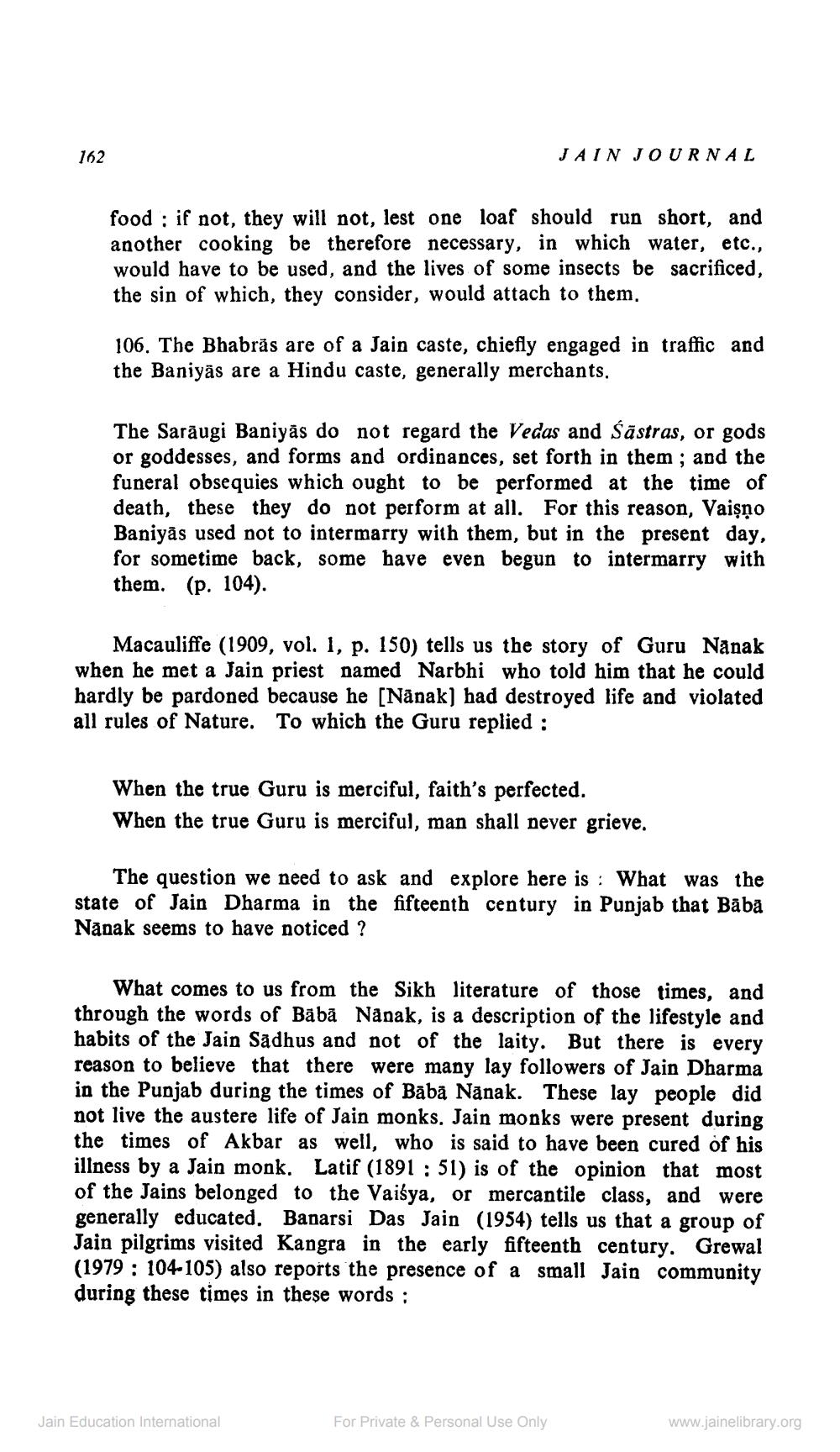________________
162
JAIN JOURNAL
food : if not, they will not, lest one loaf should run short, and another cooking be therefore necessary, in which water, etc., would have to be used, and the lives of some insects be sacrificed, the sin of which, they consider, would attach to them.
106. The Bhabrás are of a Jain caste, chiefly engaged in traffic and the Baniyās are a Hindu caste, generally merchants.
The Sarāugi Baniyās do not regard the Vedas and Šāstras, or gods or goddesses, and forms and ordinances, set forth in them; and the funeral obsequies which ought to be performed at the time of death, these they do not perform at all. For this reason, Vaişņo Baniyās used not to intermarry with them, but in the present day, for sometime back, some have even begun to intermarry with them. (p. 104).
Macauliffe (1909, vol. 1, p. 150) tells us the story of Guru Nanak when he met a Jain priest named Narbhi who told him that he could hardly be pardoned because he [Nānak) had destroyed life and violated all rules of Nature. To which the Guru replied :
When the true Guru is merciful, faith's perfected. When the true Guru is merciful, man shall never grieve.
The question we need to ask and explore here is : What was the state of Jain Dharma in the fifteenth century in Punjab that Bābā Nanak seems to have noticed ?
What comes to us from the Sikh literature of those times, and through the words of Bābā Nanak, is a description of the lifestyle and habits of the Jain Sadhus and not of the laity. But there is every reason to believe that there were many lay followers of Jain Dharma in the Punjab during the times of Baba Nanak. These lay people did not live the austere life of Jain monks. Jain monks were present during the times of Akbar as well, who is said to have been cured of his illness by a Jain monk. Latif (1891 : 51) is of the opinion that most of the Jains belonged to the Vaisya, or mercantile class, and were generally educated. Banarsi Das Jain (1954) tells us that a group of Jain pilgrims visited Kangra in the early fifteenth century. Grewal (1979 : 104-105) also reports the presence of a small Jain community during these times in these words :
Jain Education International
For Private & Personal Use Only
www.jainelibrary.org




